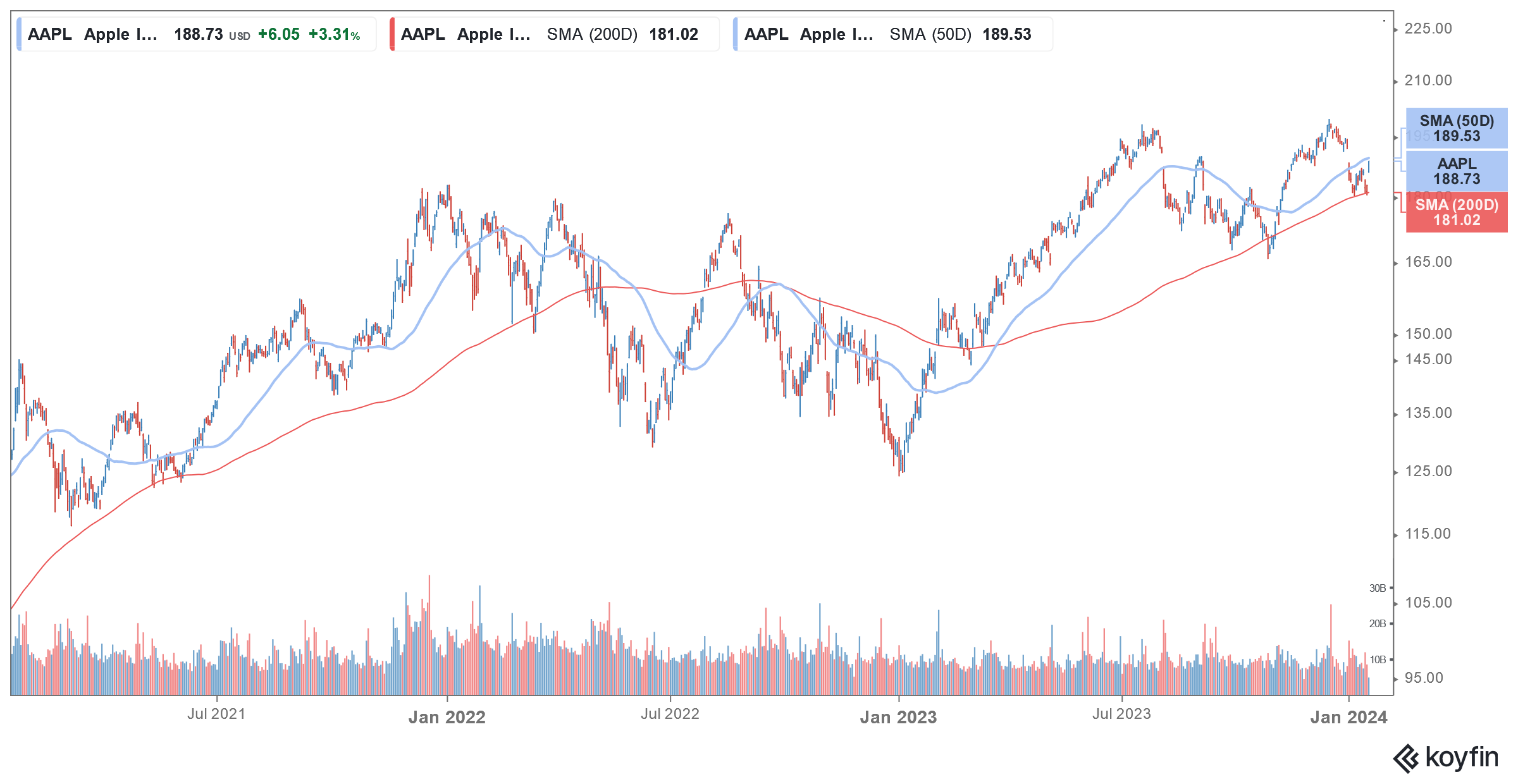Apple to Remove Blood Oxygen Feature from Watch to Evade Ban
Please note that we are not authorised to provide any investment advice. The content on this page is for information purposes only.
Apple would remove the blood oxygen feature from its latest watch as it seeks to evade the ban over a patent infringement issue raised by medical devices company Masimo.
Masimo alleges that Apple poached several of its top executives and also copied its technology while declining a partnership with it. Incidentally, the International Trade Commission said in October that Apple’s blood oxygen sensors infringed on Masimo’s intellectual property. Masimo is however open to settling the issue with the iPhone maker.
In December, the U.S. banned the imports of Apple watches over the issue. The ban came amid the holiday season and is expected to have hurt the company’s sales during the period. The company won a temporary reprieve when the ban on sales of the watches was lifted. However, yesterday, a federal appeals court resumed the ban on Apple Watch Series 9 sales.
Apple removes the blood oxygen feature from the latest watch
After the recent court order, Apple has decided to remove the feature from the latest watch, which is surprising as it is rare for the company to remove a product feature. According to an Apple spokesperson, “Pending the appeal, Apple is taking steps to comply with the ruling while ensuring customers have access to Apple Watch with limited disruption.”
The company added, “These steps include introducing a version of Apple Watch Series 9 and Apple Watch Ultra 2 in the United States without the Blood Oxygen feature. There is no impact to Apple Watch units previously purchased that include the Blood Oxygen feature.”
Meanwhile, even though the Watch accounts for a small fraction of Apple’s total revenues, it has set its eyes on the healthcare business, and in 2019, Apple’s CEO Tim Cook famously said, “If you zoom out into the future, and you look back, and you ask the question, ‘What was Apple’s greatest contribution to mankind,’ it will be about health.”
Apple has big plans for healthcare business
Earlier this month, there were rumors that Apple might acquire Peloton to strengthen its healthcare business. While the rumors were unsubstantiated, Gene Munster of Deepwater Asset Management believes that “the stars are starting to line up” for an eventual buyout of Peloton by Apple. He listed multiple reasons including that “it makes sense for Apple’s business model.” He said that Apple currently has six subscription products which account for 4% of Apple’s revenues ($16 billion in absolute terms.)
Munster said that if Peloton can continue its current revenue growth rates, it would be around 11% of Apple’s current subscription revenues. He also pointed out that Peloton’s subscription business has stabilized. Munster also believes that Peloton would fit well into Apple’s overall healthcare business.
He also talked about the valuation gap between the two companies and said that even if Apple pays a 50% premium over PTON’s current stock price it would be only twice the company’s subscription revenues while Apple trades at seven times its revenues.
AAPL stock finally gets an upgrade
Apple was the worst-performing FAANG share last year and some Wall Street analysts are bearish on the shares in 2024. Three analysts downgraded the stock over the last two weeks but today Bank of America analyst Wamsi Mohan upgraded the stock to a buy from neutral.
“We upgrade Apple to Buy from Neutral, given: 1) stronger multi-year iPhone upgrade cycle driven by need for the latest hardware to enable Generative AI features to be introduced in 2024/2025 (large part of installed base still on iPhone 11), 2) higher growth in Services as Apple better monetizes its installed base,” said Mohan in its note.
He also raised his iPhone unit sales for 2024, 2025, and 2026 and said the company’s channel checks “suggest higher iPhone production in Dec and potentially lower in March but no aggregate material order changes.”
While there are concerns over iPhone sales in China where AAPL is battling a slowing economy and competition from domestic Chinese smartphone companies, Mohan believes, “China weakness is largely offset by strength in other countries.”
Apple sees a big opportunity in India
AAPL sees India as a big opportunity and last year opened its first two retail stores in the country and is also looking to increase sourcing from the country to diversify its supply chain.
Notably, the opening of retail stores in India was a big step forward for AAPL and analysts see it as a sign of the importance that it attaches to the country. Cook has talked up the potential of the Indian market multiple times.
The US is the biggest market for Apple iPhones followed by China, Japan, and the UK. According to Canalys, Apple had a 7% market share of the Indian smartphone market in the fourth quarter– which is the second largest in the world after China.
The global smartphone market has sagged
However, budget handsets dominate the Indian market with Samsung being the market leader. The bulk of the market is however with Chinese companies despite the ongoing troubles between the two neighbors who share a long and disputed border.
Meanwhile, last year, AAPL dethroned Samsung to become the biggest smartphone company globally. While iPhone shipments also sagged and Apple reported a revenue decline in all four quarters in the fiscal year 2023, it still did better than the overall industry.
In its report, Canalys said, “Apple showed resilience over the past two years, thanks to solid ongoing demand in the high-end segment. The expanded positioning of its iPhone 15 series has pointed to the future direction of Apple’s portfolio strategy to reach a broader range of consumer segments.”






